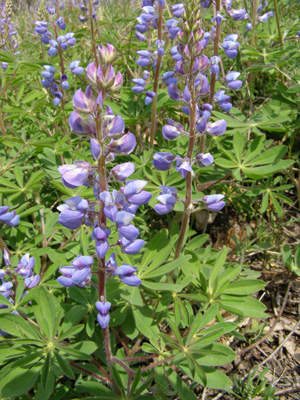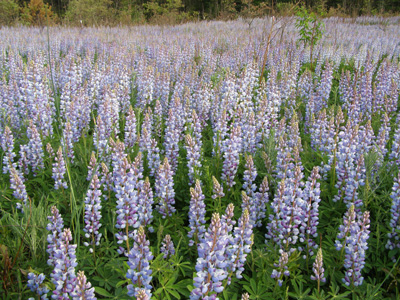Lupinus perennisCommon Names: Wild Lupine, Sundial Lupine |   | Soil: Dry Dry-Mesic |
| Height: 1 ft - 2 ft | ||
| Blooming: May Jun |
This species led me to the path of enlightenment regarding native species, so it will always hold a special place in my heart. Where abundant, it is an important early season nectar/pollen source for bees, small butterflies, beetles, and flies. Host plant for many species including some threatened and endangered species: the Karner Blue Butterfly (Lycaeides melissa samuelis), Persius Duskywing(Erynnis persius),and Frosted Elfin (Callophrys irus). Many other insects also feed on this species. Lupine forms a relationship with rhizobia, which are soil bacteria, within root nodules to fix atmospheric nitrogen. I have many fond memories of sitting near the lupine patches on our property in the spring while watching and listening to the hoards of bumblebees, carpenter bees, mason bees, and other bees preparing for the seasons ahead. This species used to occupy thousands of acres in Kalamazoo county, and similar habitat in many surrounding counties, and now is the time to re-establish this critical plant species in its former haunts.
All photos Copyright © 2024 Hidden Savanna Nursery




